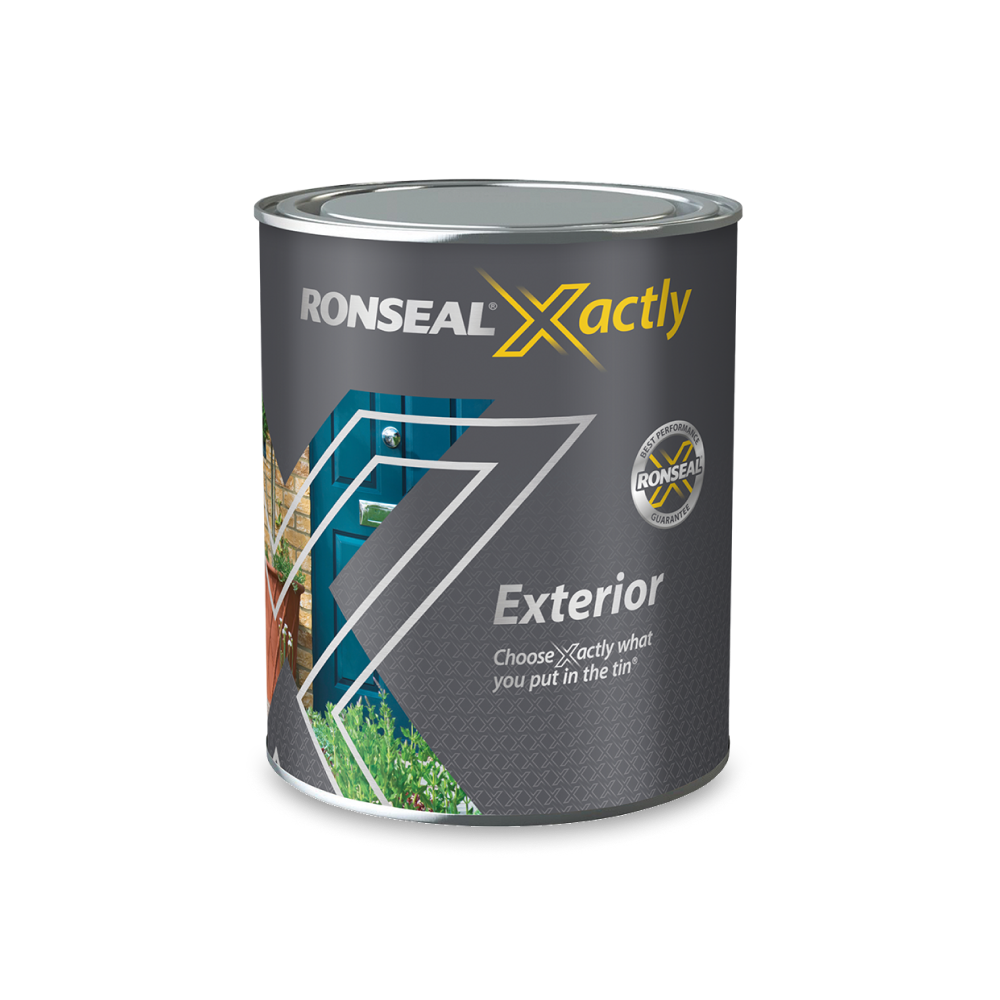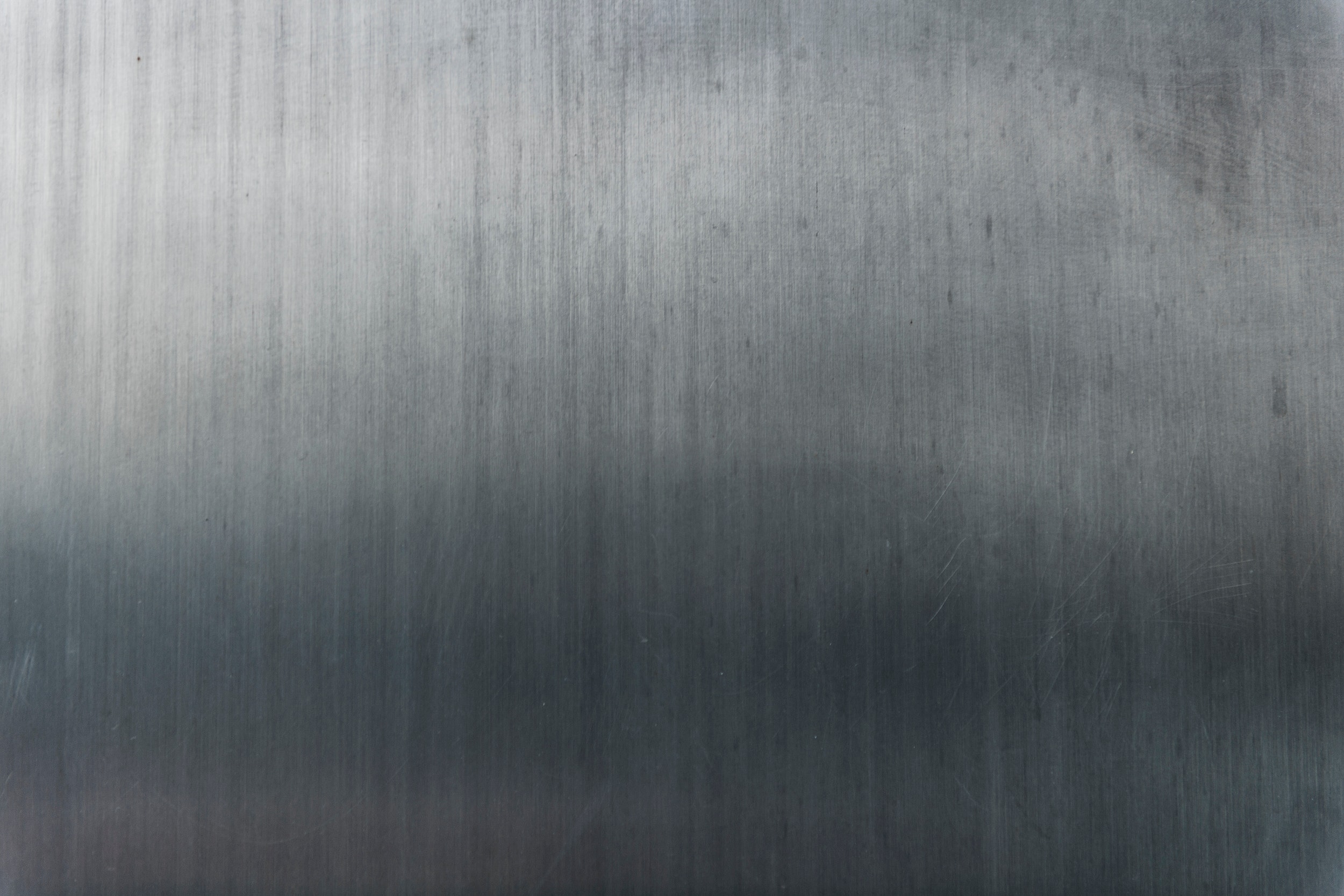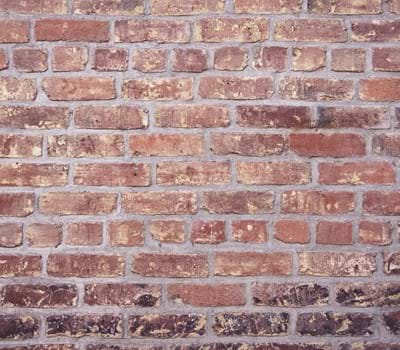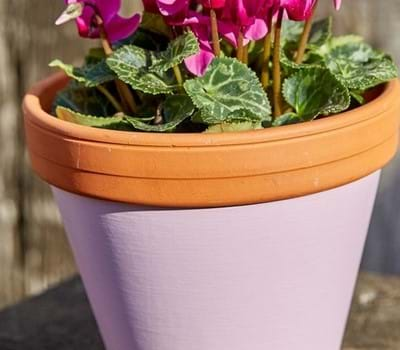Xactly Exterior Paint
Description
Product features
- All year, all weather protection
- Ideal for wood - Paint also ideal for metal, brick and more
- 10 year guarantee on wood
- Prevent cracking, peeling and splitting
- Long-lasting colour with low odour and VOCs
How much paint do I need?
Measure your area precisely, drop the numbers into this smart calculator and it will tell you straight away how many litres you'll need to complete your project.

It will take you roughly 4-7 hours to do the DIY That's the same as listening to book one of War and Peace.
How much stain do I need?
Measure your area precisely, drop the numbers into this smart calculator and it will tell you straight away how many litres you'll need to complete your project.

How do the colours look?
Use on...
Choose a warm, dry day (above 10ᵒC). Make sure the surface is clean, dry and clear from dirt, dust and grease.
Bare wood
Lightly sand the wood to give it an even finish. Use 120 grit sandpaper and sand in the direction of the woodgrain. Remember to wear a facemask. Clean up dust and wipe down with a damp cloth. Fill any holes or cracks with our Wood Filler.
Previously painted wood
If your previously painted wood is in good condition, then you'll need to give it a sand using 120 grit sandpaper, making sure there are no loose or flaking coatings. Make sure you wear a facemask and wipe down the surface with a damp cloth. Fill any holes or cracks with our Wood Filler.
Metal, brick & terracotta
If the surface has been previously painted, give it a light sand using 120 grit sandpaper and remove any loose or flaking coating. Make sure you use a facemask and wipe down the surface with a damp cloth. Bare metal surfaces will need to be primed with a suitable metal primer before painting.
Give the tin a really good stir. Check you're happy with the colour by finding a small area to try it on. When painting wood, always paint in the direction of the woodgrain.
You'll need to put on 3 coats. Leave 4 hours between each coat. Give the surface a light sand with 240 grit sandpaper and wipe away any dust with a damp cloth before putting on the last coat. This coat will be rainproof in 1 hour.
Take as much of the coating off your brush as you can and then wash in warm, soapy water. Don't empty any left over product into drains or watercourses. Your local authority may have special ways to get rid of waste coastings.
Choose a warm, dry day (above 10ᵒC). Make sure the surface is clean, dry and clear from dirt, dust and grease.
Bare wood
Lightly sand the wood to give it an even finish. Use 120 grit sandpaper and sand in the direction of the woodgrain. Remember to wear a facemask. Clean up dust and wipe down with a damp cloth. Fill any holes or cracks with our Wood Filler.
Previously painted wood
You'll need to sand back to bare wood. Use 120 grit sandpaper and sand in the direction of the woodgrain. Make sure you wear a facemask and wipe down the wood with a damp cloth. Fill any holes or cracks with our Wood Filler.
Previously stained wood
If the previous coating is in poor condition with any signs of peeling or flaking then you'll need to sand it back to bare wood. If it's in good condition then just give the wood a good sand with 120 grit sandpaper. Remember to wear a facemask. Clean up any dust and wipe down with a damp cloth.
Give the tin a really good stir. Check you're happy with the colour by finding a small patch of wood to try it on. Brush it on with a synthetic brush in the direction of the woodgrain.
You'll need to put on 3 coats. Leave 4 hours between each coat. Give the surface a light sand with 240 grit sandpaper and wipe away any dust with a damp cloth before putting on the last coat. This coat will be rainproof in 1 hour.
Take as much of the coating off your brush as you can and then wash in warm, soapy water. Don't empty any left over product into drains or watercourses. Your local authority may have special ways to get rid of waste coastings.




